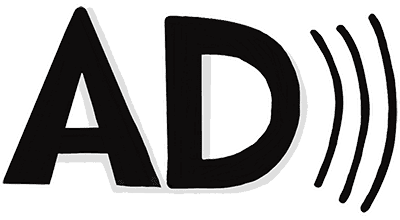1.2.3 - Audio Description or Media Alternative (Prerecorded) - A
Intent
Enable people who are blind or visually impaired to understand the visual information in synchronized media by providing audio descriptions or transcripts.
Who Benefits
- People who cannot see the video content of synchronized media can listen to the audio description to understand the visual information.
- People who cannot both see and hear can have the text alternative perceived by a braille display.
- People who prefer to listen to the audio can consume the content thanks to the audio description.
- People who have difficulties understanding the language of the audio track in a video can benefit from reading the transcript in parallel.
Audio Descriptions

An audio track that narrates the relevant visual information contained in a video, such as actions, characters, scene changes, or on-screen text. That helps people with visual or intellectual disabilities to understand the content. The audio track can be made by voice actors or synthetic voices.
Techniques
The following techniques for providing audio descriptions can be used:
- Provide a second, user-selectable soundtrack with audio descriptions - users can turn the audio descriptions on and off
- Provide a second version of the video with "built-in" audio descriptions - users can choose between a video without or with audio descriptions
Types
Audio descriptions can be:
- Traditional - description is narrated in between the dialogues when there is no spoken content
- Extended - when the gaps between dialogues are insufficient for adequate description, the video part of the media is temporarily paused and the description is narrated until the auditory information is conveyed.
Exceptions
Audio descriptions are not necessary when:
- All of the information in the video track is already provided in the audio track
- There are no important visual details (such as in a press conference or a government announcement)
Transcript

Transcript is a text version of audio content. All of the information in the synchronized media should be described in an adjacent or easily reachable text and should contains:
- visual context
- actions and expressions of actors
- non-speech sounds (laughter, off-screen voices, ...)
- dialogues
- and more information presented visually
If the transcript is on a separate page, there must be a functional link close to the video that points to that separate page, and also a functional link back.
Conformance
Three WCAG criteria overlap with each other due to the conformance:
- 1.2.3 - Audio Description or Media Alternative (Prerecorded) - A (this criterion) - you must include transcript OR audio description to comply with the criterion.
- 1.2.5 - Audio Description (Prerecorded) - AA - you must include audio description to comply with the criterion.
- 1.2.8 - Media Alternative (Prerecorded) - AAA - you must include transcript to comply with the criterion.
These 3 criteria exist to give you a choice for a minimum conformance level:
- If you want to conform only to level A, you can choose between including either transcript or audio description.
- If you want to conform to level AA, including only audio description is enough for the conformance. However, including both transcript and audio description is best for users.
- If you want to conform to level AAA, you must include both the transcript and the audio description, because in order to conform to level AAA you also need to meet all the level A and AA criteria first.
Examples
Correct Usage
The following examples show the correct usage or implementation of accessibility.
Example 1: Video Player with Audio Descriptions
Able Player is a fully accessible cross-browser media player. See the example Audio description via video swap. The example uses a separate video to deliver an audio description. If audio descriptions are toggled on, users get the described version; otherwise, they get the non-described version.
Incorrect Usage
The following example shows incorrect usage or implementation of accessibility.
Example 1: No Audio Descriptions
Not including audio descriptions in a video that has a lot of visual actions, such as a silent movie or an opera performance, is excluding people who cannot see the video.
Test Your Knowledge
Are audio descriptions required for the alternate presentation of information already available in text on the page?
No, audio descriptions are not required when the synchronized media is an alternate presentation of information that is already available in text on the page.
If there is only an audio description provided for the synchronized media without a transcript, would that conform to this WCAG criterion?
Yes, because the requirement is to provide an audio description OR the text alternative. However, audio descriptions are not accessible for deafblind people, so it is always better to include the transcript as well.